Deep within the swamps and wetlands of East Africa, one of nature’s most peculiar and prehistoric-looking birds silently stalks its prey. The shoebill (Balaeniceps rex), with its massive shoe-shaped bill and piercing gaze, has captivated wildlife enthusiasts for generations. These remarkable birds employ hunting tactics so specialized and effective that they’ve become masters of their marshy domains. Far from being just another wading bird, the shoebill represents one of evolution’s most fascinating experiments in specialized predation. In this article, we’ll explore the extraordinary hunting capabilities of this enigmatic creature, delving into behaviors that might just be the most impressive display of natural precision you’ve ever witnessed.
The Unmistakable Appearance of Nature’s Patient Hunter
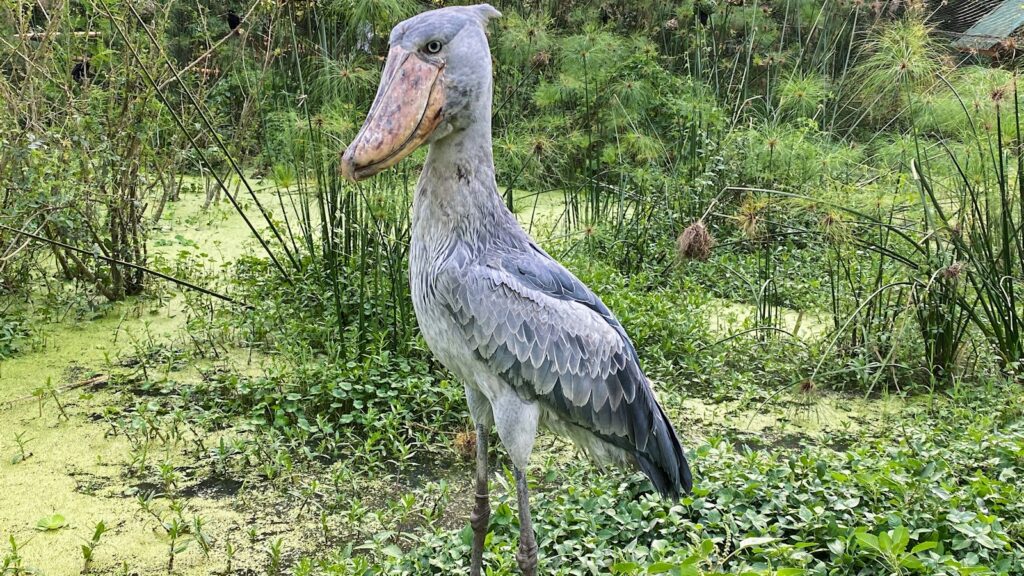
Standing at up to 5 feet tall with a wingspan reaching 8 feet, the shoebill cuts an imposing figure in its wetland habitat. Its most distinctive feature—the massive bill that gives the bird its name—measures an astonishing 7.4 to 9.4 inches long and 4 inches wide. This enormous bill isn’t just for show; it’s a precision hunting tool that has evolved specifically for the bird’s specialized hunting techniques. The shoebill’s slate-gray plumage helps it blend into the shadows of papyrus stands and marsh grasses, while its yellowish eyes seem to stare with an intensity that has earned it the nickname “death stork” among some local communities. When motionless, the shoebill can appear almost statue-like, a quality that serves it well during its marathon hunting sessions.
The Art of Stillness: Patience as a Hunting Strategy
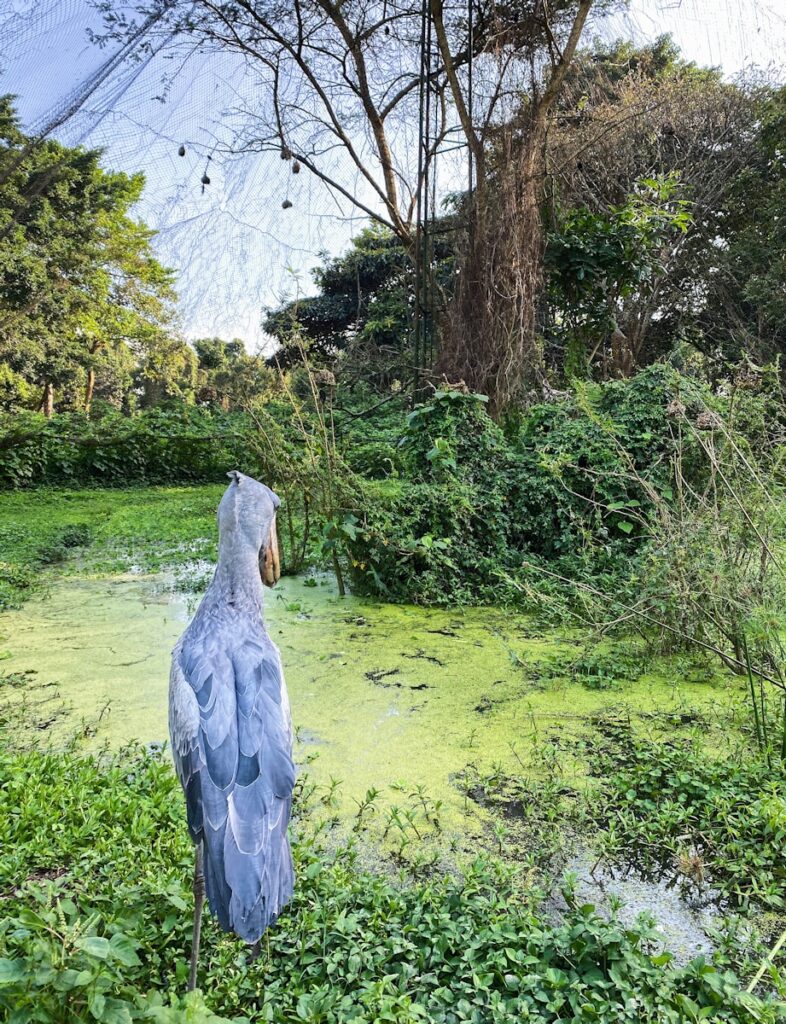
Perhaps the most remarkable aspect of the shoebill’s hunting technique is its almost supernatural patience. These birds can stand motionless for hours on end, waiting for the perfect moment to strike. Unlike many predatory birds that actively pursue their prey, the shoebill employs a strategy known as “stand-and-wait” hunting, turning stillness into a lethal weapon. Researchers have observed individual shoebills remaining in hunting posture for up to four hours without moving more than their eyes. This extraordinary patience allows them to become virtually invisible to their prey, which eventually forget or fail to notice the predator’s presence. The energy conservation of this hunting style is particularly advantageous in the sweltering East African climate, where active hunting would quickly deplete the bird’s stamina.
The Lightning-Fast Strike: When Patience Transforms to Power

When the moment finally arrives, the shoebill transforms from a statue-like figure to a lightning-fast predator with astonishing speed. The strike itself is one of the fastest movements in the bird world, with the shoebill capable of lunging forward and plunging its massive bill into the water in less than a second. This explosive movement generates enough force for the bill to penetrate dense marsh vegetation and even the muddy substrate where prey might be hiding. The bird’s neck muscles, which have evolved specifically for this hunting technique, store potential energy during the waiting period before releasing it in one powerful motion. High-speed camera footage has revealed that a shoebill’s strike can reach speeds of up to 3 meters per second—roughly equivalent to the punch of a professional boxer scaled to the bird’s size.
The Deadly Precision of the Bill-Trap
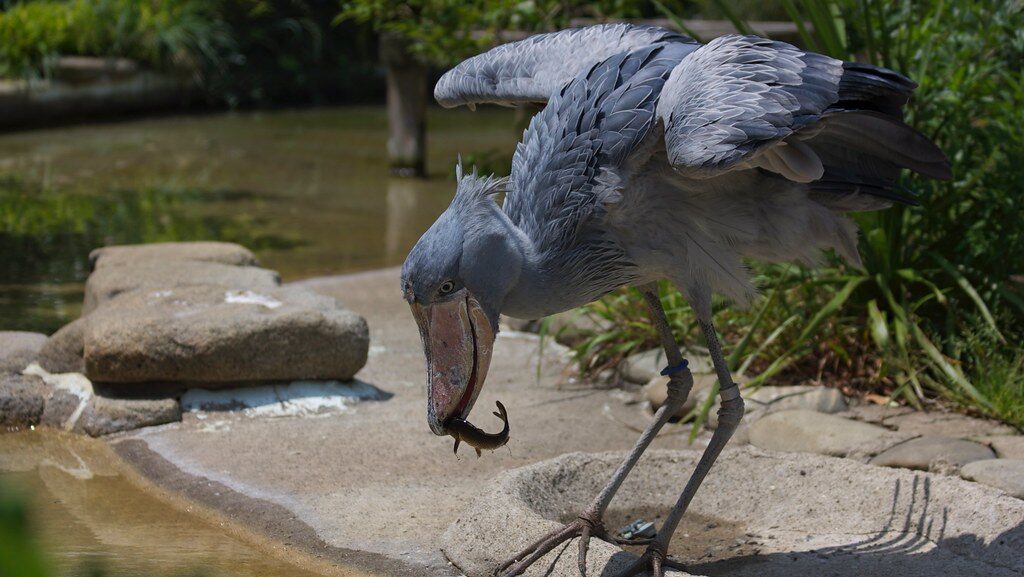
The shoebill’s most remarkable hunting feature is undoubtedly its specialized bill, which functions as a highly effective trapping mechanism. The edges of the bill are razor-sharp and serrated, capable of instantly gripping slippery prey like lungfish and eels. When the bill snaps shut, small backward-pointing projections inside ensure that struggling prey cannot escape. The shoebill can generate a bite force estimated at over 500 pounds per square inch (PSI)—comparable to the bite of some crocodilians—allowing it to crush the skulls of small animals or sever the spines of larger prey. This deadly precision explains why the shoebill rarely misses once it commits to a strike, with field studies suggesting a success rate of around 70%—extraordinary for a wild predator.
Specialized Diet: The Targets of the Shoebill’s Hunt
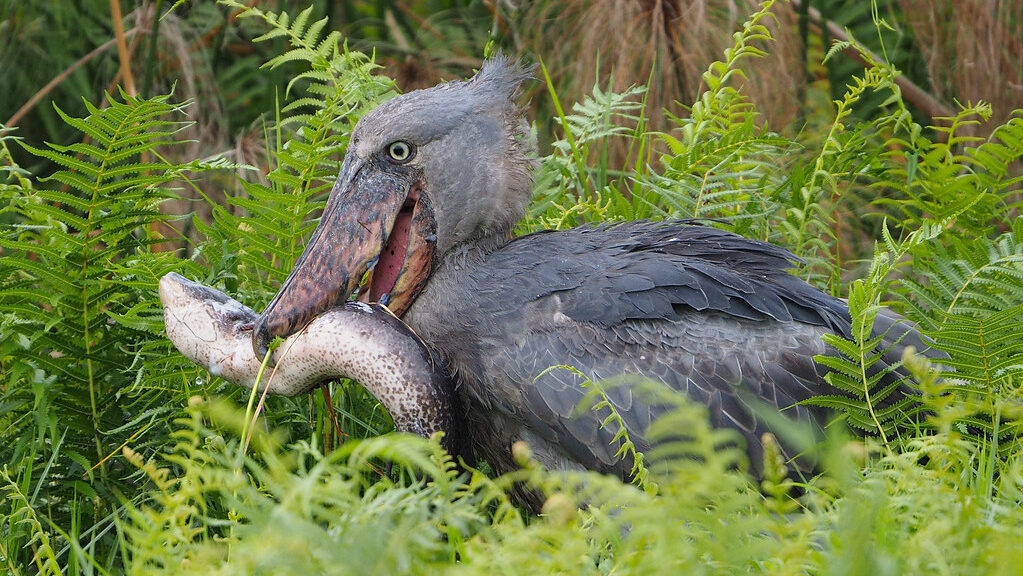
The shoebill has evolved its remarkable hunting tactics to target specific prey that other predators often find too challenging to capture. Lungfish are among their preferred meals, particularly the African lungfish (Protopterus sp.), which can grow up to 6 feet long and weigh over 40 pounds. These prehistoric fish present a substantial challenge for most predators due to their tough scales and powerful muscles. The shoebill also targets catfish, eels, monitor lizards, small crocodiles, and even occasionally the young of larger crocodilians. In particularly dry seasons, shoebills have been observed hunting terrestrial prey such as snakes and baby waterfowl. This specialized diet allows the shoebill to occupy a unique ecological niche with minimal competition from other predatory birds.
The Collapsing Deck Technique: Engineering in Action
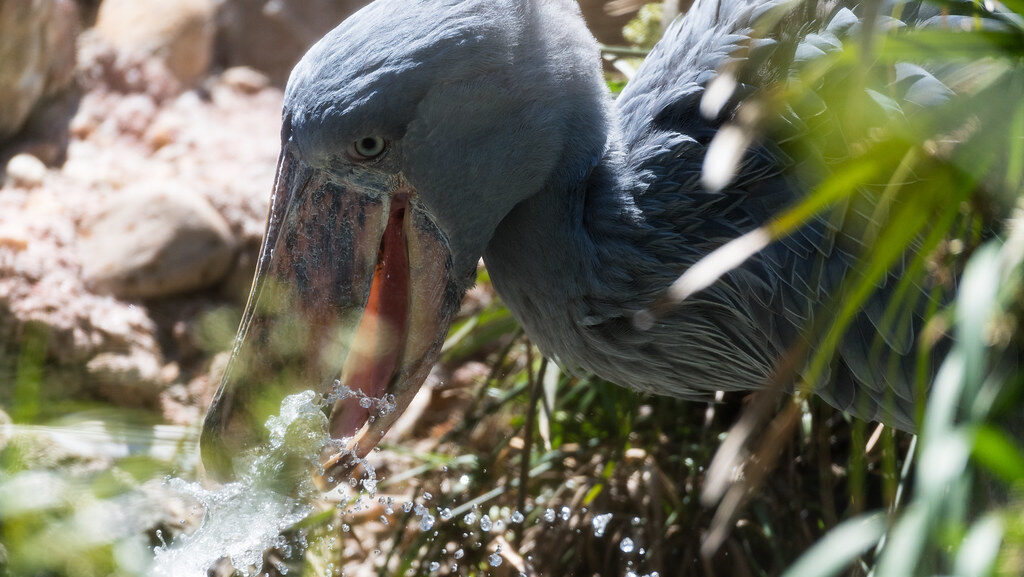
One of the shoebill’s most fascinating hunting behaviors is what researchers have termed the “collapsing deck” technique. When hunting in areas with floating vegetation, the shoebill will deliberately create disturbances by shifting its weight to cause sections of vegetation to sink or tilt. This clever manipulation forces hidden prey to move or resurface, revealing their location and creating the perfect striking opportunity. The technique demonstrates a remarkable level of problem-solving intelligence not commonly associated with wading birds. Researchers studying this behavior have noted that individual shoebills appear to improve their “collapsing deck” technique over time, suggesting that this is a learned skill rather than a purely instinctual behavior.
Shadow Hunting: Using Light to Their Advantage
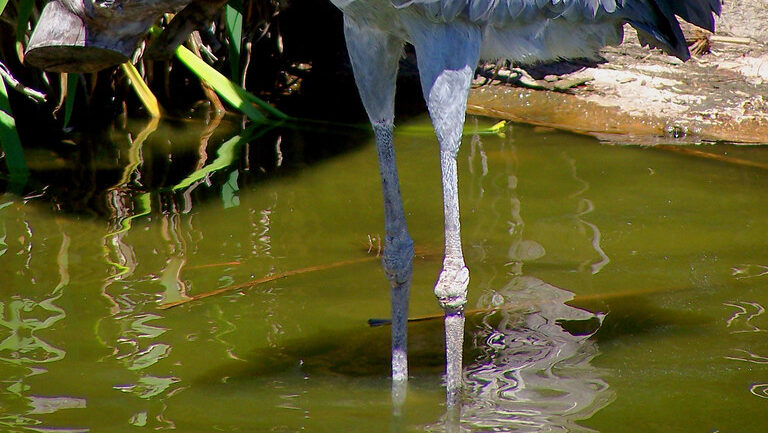
Shoebills have demonstrated a sophisticated understanding of how their shadow affects prey behavior, often positioning themselves to prevent their shadow from falling over potential hunting grounds. When hunting during bright daylight, they frequently orient themselves with the sun at their backs, ensuring their shadow falls behind them rather than alerting prey in front. In particularly clear water, shoebills have been observed using their wings to create shadows over the water surface, reducing glare and improving their ability to spot movement below. This shadow management represents a level of hunting sophistication that puts the shoebill in the company of much more celebrated predators like herons and kingfishers, though the shoebill executes these techniques on a much larger scale.
The Head-Shaking Finishing Move
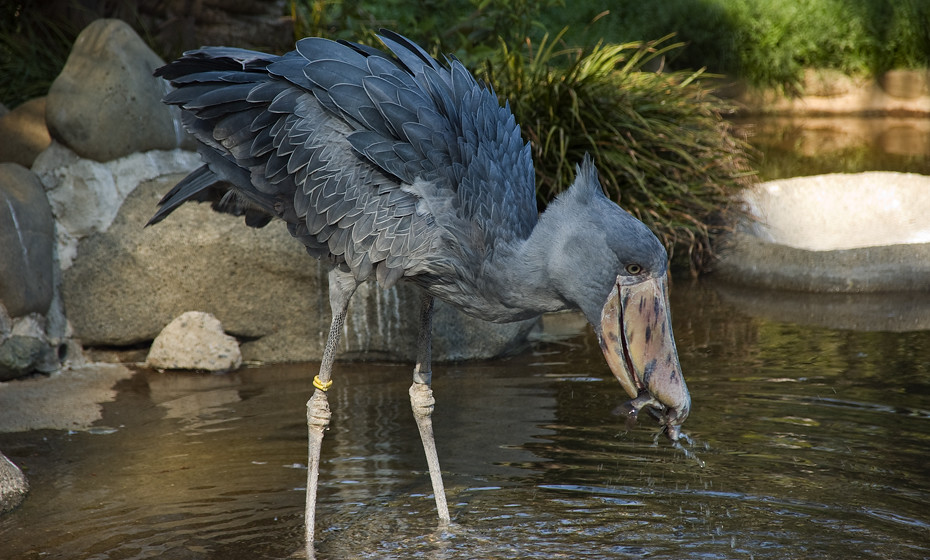
Once the shoebill has successfully captured prey, it performs a distinctive head-shaking motion that serves multiple practical purposes. This vigorous shaking helps to break the neck or spine of larger prey, ensuring it cannot escape or cause injury to the bird during consumption. For prey with sharp spines, like certain catfish species, the shaking dislodges or breaks these potentially dangerous structures before swallowing. The head-shaking also serves to position the prey headfirst for easier swallowing, as most fish and eels are consumed whole. This behavior represents the final stage in the shoebill’s hunting sequence and is performed with the same mechanical precision as its initial strike.
Social Learning: How Young Shoebills Master the Hunt
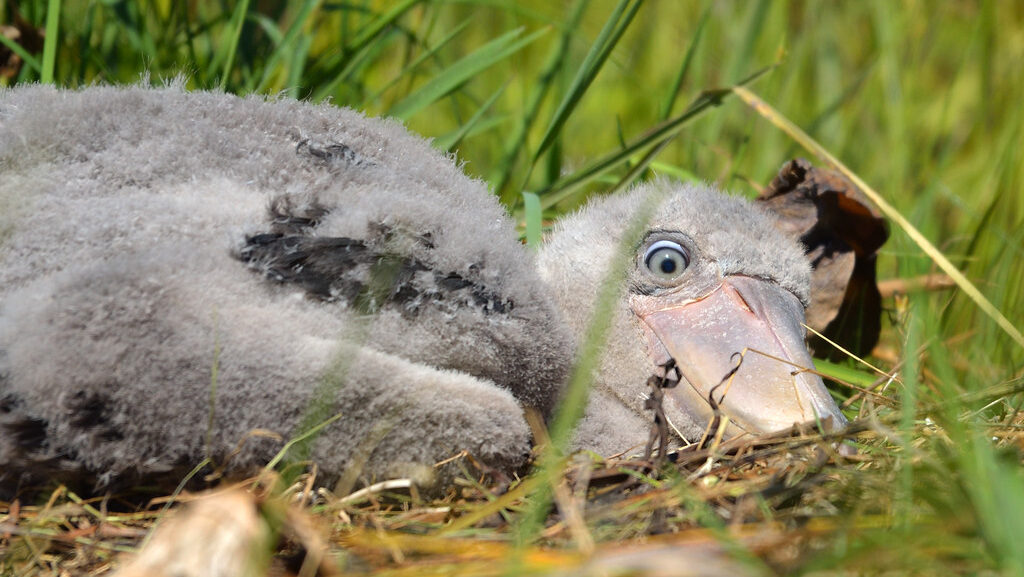
The complex hunting tactics employed by shoebills aren’t entirely instinctual—young birds must learn and perfect these techniques through observation and practice. Juvenile shoebills remain with their parents for an unusually long period compared to other wading birds, typically staying for 3-4 months after fledging. During this time, they observe the hunting techniques of adults, gradually attempting their own versions with increasing skill. Young shoebills initially make frequent mistakes, striking too early or failing to remain still enough, but success rates improve dramatically with experience. This period of apprenticeship highlights the sophisticated nature of the shoebill’s hunting strategy and explains why adult birds demonstrate such remarkable proficiency.
Seasonal Adaptations in Hunting Behavior
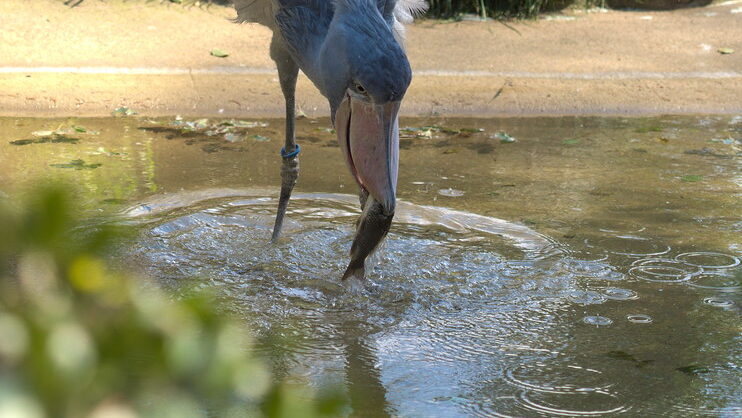
The shoebill displays remarkable adaptability in its hunting techniques depending on seasonal changes in its wetland habitat. During dry seasons, when water levels drop, shoebills concentrate their hunting in the remaining deep pools where fish become concentrated. Their tactics during these periods become more aggressive and less patient, as competition with other predators intensifies. Conversely, during flood seasons, shoebills adapt by hunting in newly inundated areas where prey fish may be less familiar with the terrain and thus more vulnerable. They may also shift to targeting different prey species based on seasonal availability, showing ecological flexibility despite their specialized hunting techniques.
Hunting Territories and Defense
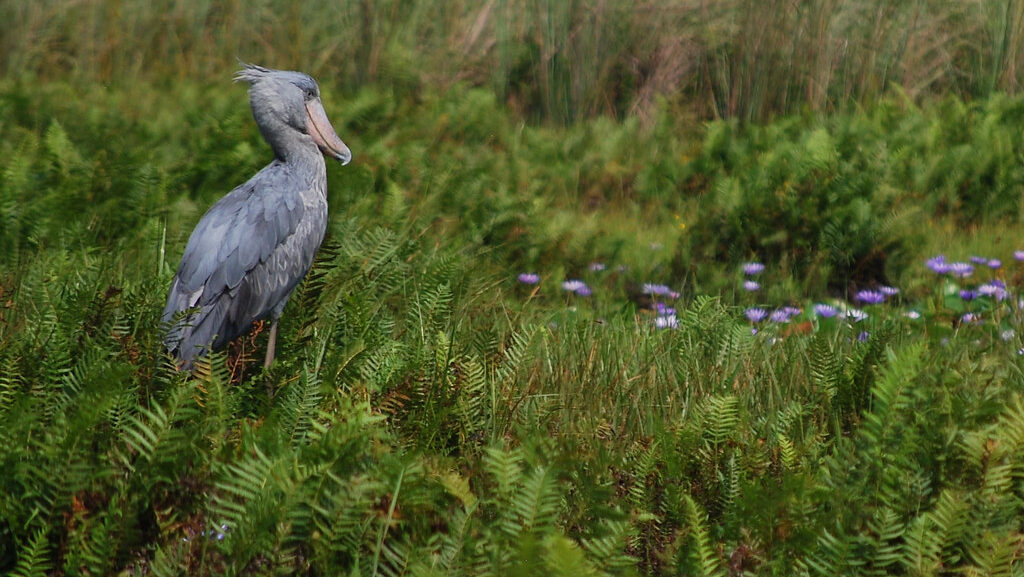
Shoebills maintain large hunting territories of up to 7 square kilometers, which they defend vigorously against intrusion by other shoebills. These massive territories ensure sufficient prey resources and reflect the substantial amount of undisturbed hunting space needed for their specialized techniques to succeed. Territorial boundaries are patrolled regularly, with shoebills performing distinctive bill-clapping displays as warnings to potential intruders. When territorial disputes do occur, they rarely escalate to physical confrontation—instead, elaborate posturing and bill-clapping usually establish dominance. The size and exclusive nature of these territories represent another aspect of the shoebill’s highly specialized approach to hunting and resource management.
Conservation Challenges for Africa’s Feathered Dinosaur
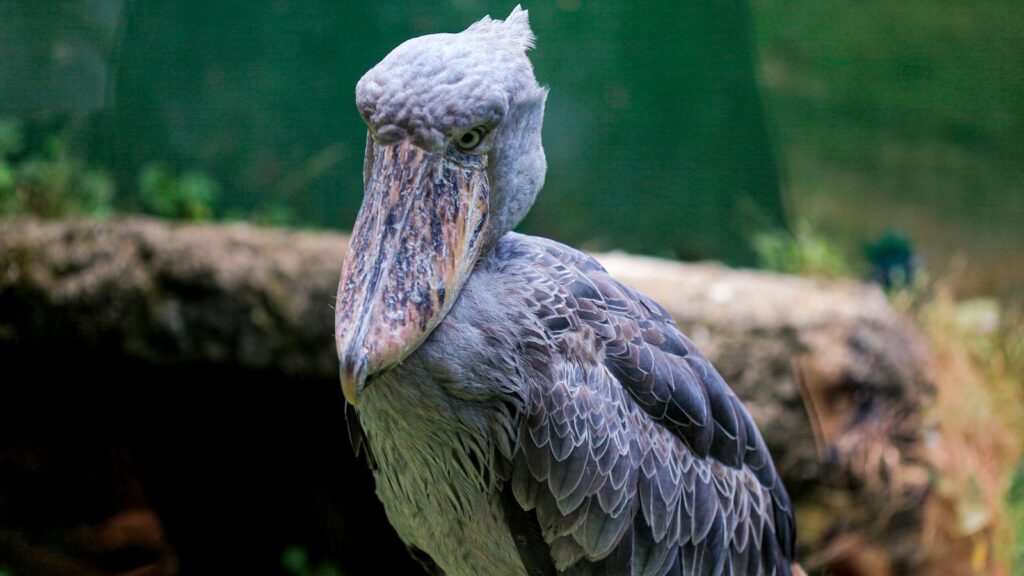
Despite their formidable hunting prowess, shoebills face significant conservation challenges that threaten their specialized way of life. With an estimated global population of just 5,000-8,000 individuals, the shoebill is classified as Vulnerable on the IUCN Red List. Habitat destruction through drainage of wetlands for agriculture poses the most significant threat, destroying the specialized hunting grounds these birds require. Wildlife trafficking also impacts shoebill populations, with live birds fetching high prices in illegal wildlife markets due to their prehistoric appearance and rarity. Climate change presents another serious concern, as altered rainfall patterns affect water levels in the marshes and swamps where shoebills hunt, potentially disrupting their finely-tuned hunting strategies that have evolved over millennia.
Witnessing the Hunt: A Wildlife Spectacle Few Ever See
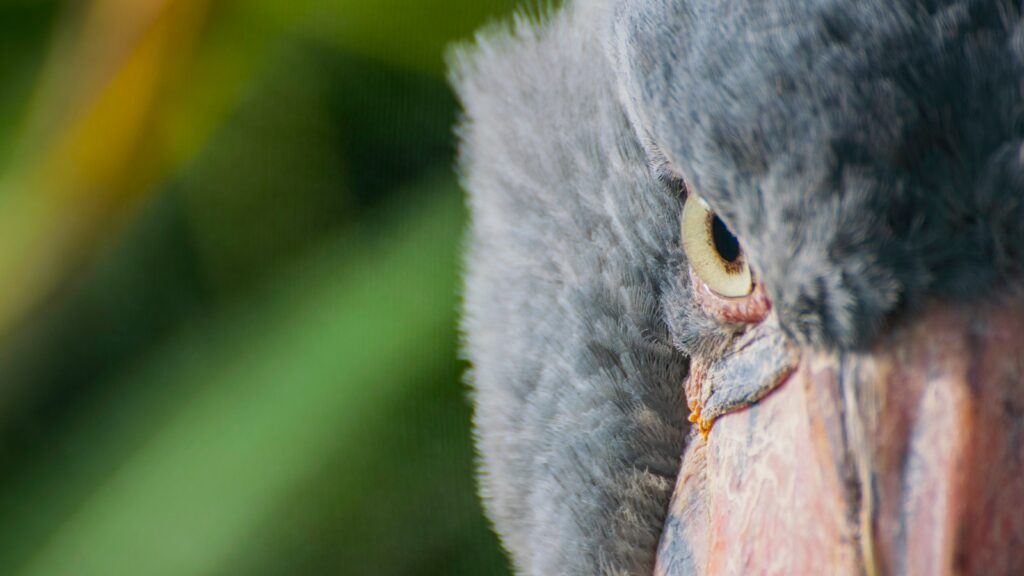
Observing a shoebill hunt in the wild remains one of Africa’s most sought-after wildlife experiences, though one that few tourists ever witness. The remote swamps of South Sudan, Uganda, and Zambia offer the best opportunities, with specialized wildlife tours dedicating days to finding and observing these elusive birds. Patience is essential, as observers may need to wait many hours for a hunting strike to occur. Wildlife photographers consider capturing a successful shoebill hunt to be among the most challenging and rewarding achievements in their field. Those fortunate enough to witness the complete hunting sequence—from motionless waiting to explosive strike to head-shaking finishing move—invariably describe it as one of nature’s most impressive predatory displays.
Conclusion
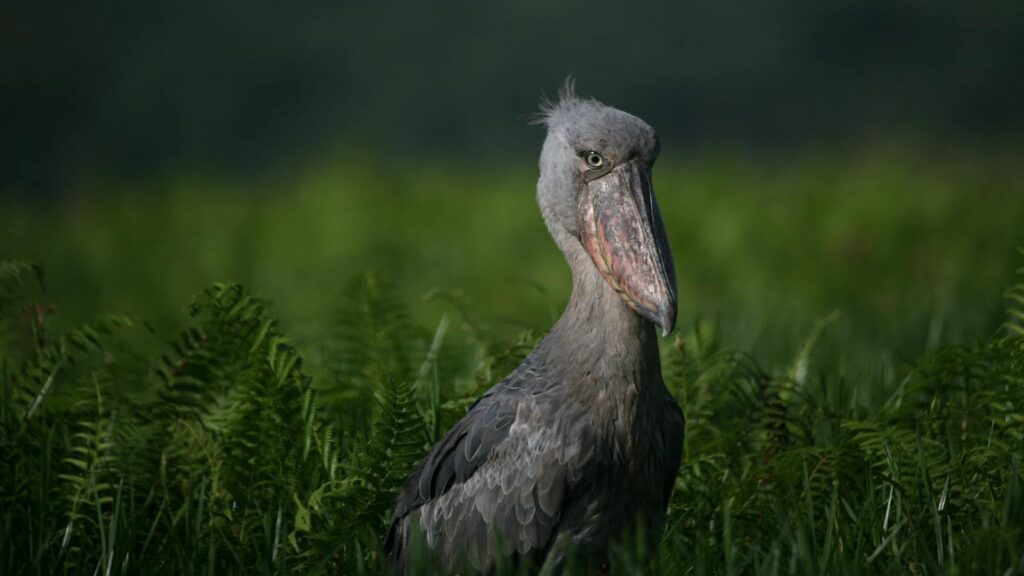
The shoebill stands as a masterclass in evolutionary specialization, having perfected hunting tactics uniquely suited to its challenging wetland environment. From its remarkable patience and lightning-fast strikes to its territory management and prey selection, every aspect of the shoebill’s hunting behavior represents millions of years of adaptation and refinement. As wetland habitats face increasing threats from human development and climate change, conservation efforts become crucial to ensure these remarkable hunting displays continue for generations to come. The shoebill reminds us that sometimes nature’s most impressive predators aren’t the fastest or strongest, but rather those that have developed specialized techniques perfectly matched to their ecological niche—turning patience, precision, and adaptation into lethal efficiency.
